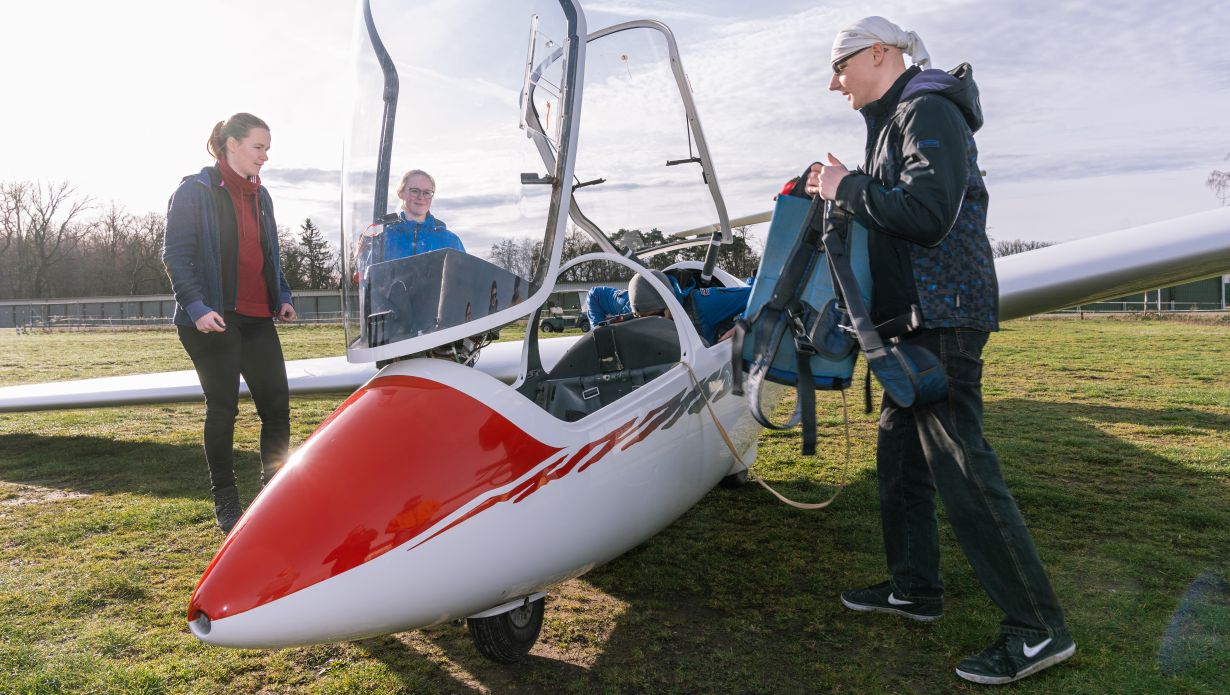In the contest to win the best minds, the Karlsruhe Institute of Technology (KIT) is adopting unusual teaching approaches in the 2024/25 winter semester, such as escape game development and a lecture with a glider flight, while continuing to give students unique insights into large-scale research projects. By encouraging active participation, an interdisciplinary mindset and outside-the-box thinking, the lecturers aim not only to impart knowledge but also to stimulate an appetite for learning.
“Teaching is a complex activity whose methods need constant adaptation to a changing world, but in essence there are two things it always has to do: impart knowledge and skills, and never cease to amaze the students,” said Professor Alexander Wanner, Vice President for Higher Education and Academic Affairs at KIT. “It’s fantastic how lecturers at KIT keep finding new ideas and formats to capture the students’ interest and help them understand highly complex processes.”
Theory and Practice Hand in Hand
An example of an unorthodox teaching format is the aerodynamics course revised by the Institute of Fluid Mechanics in collaboration with Akaflieg Karlsruhe, a KIT student association that has been building and testing airplanes and airplane parts for nearly 100 years. Now the students learn basic theory in the lecture hall and apply what they have learned in a glider flight at the end of the semester, giving them first-hand experience in how theory and practice are intertwined.
Practical learning is also emphasized in the engineering sciences. At a workshop entitled Hinter den Kulissen des KIT (behind the scenes at KIT), interested students can meet KIT infrastructure professionals from various disciplines and gain insights into their work: How are plants and their equipment planned and managed? How does a sustainable and economical energy supply work?
Students in engineering bachelor’s programs can demonstrate their math skills in the Brücke aus dem Sack (bridge in a bag) contest. Teams of students bring all of the parts for a three-meter bridge in a trash bag. They have to build the bridge on the spot within 30 minutes. The bridge has to support the professor’s weight, but it has to break down under the weight of all team members.
In addition, students studying for master's degrees in structural wood or steel design can work with architecture students to design a load-bearing structure as they would in an everyday professional setting.
New Avenues for Learning Thanks to Dialogue and Digitalization
KIT promotes other ways to learn with programs involving cooperation between students and trainees. In the course entitled Mechatronische Systeme und Produkte (mechatronic systems and products), they work together to design and build automated miniature excavators and sorting systems. The course fosters dialogue between different educational pathways and helps to overcome prejudices. Because of its success, the format is to be extended to some of the other 25 vocational training programs at KIT.
The Digital Learning Lab features innovative teaching approaches for teaching degree students, who can independently test hardware and software there to develop new teaching methods such as a math escape game or 360° teaching videos.
Unique Insights into Large-scale Research
A unique aspect of KIT remains the opportunity it provides for students in bachelor’s and master’s degree programs to participate in large-scale research experiments without waiting until their doctoral studies. This aspect is unique in Germany because KIT is the only German University of Excellence that is also a member of the Helmholtz Association of German research centers.
Weitere Informationen:
New aerodynamics course (in German)
Collaboration between students and trainees (in German)
DigiMINT project and Digital Learning Lab
In close partnership with society, KIT develops solutions for urgent challenges – from climate change, energy transition and sustainable use of natural resources to artificial intelligence, sovereignty and an aging population. As The University in the Helmholtz Association, KIT unites scientific excellence from insight to application-driven research under one roof – and is thus in a unique position to drive this transformation. As a University of Excellence, KIT offers its more than 10,000 employees and 22,800 students outstanding opportunities to shape a sustainable and resilient future. KIT – Science for Impact.

